Trusted Nurse Onboarding
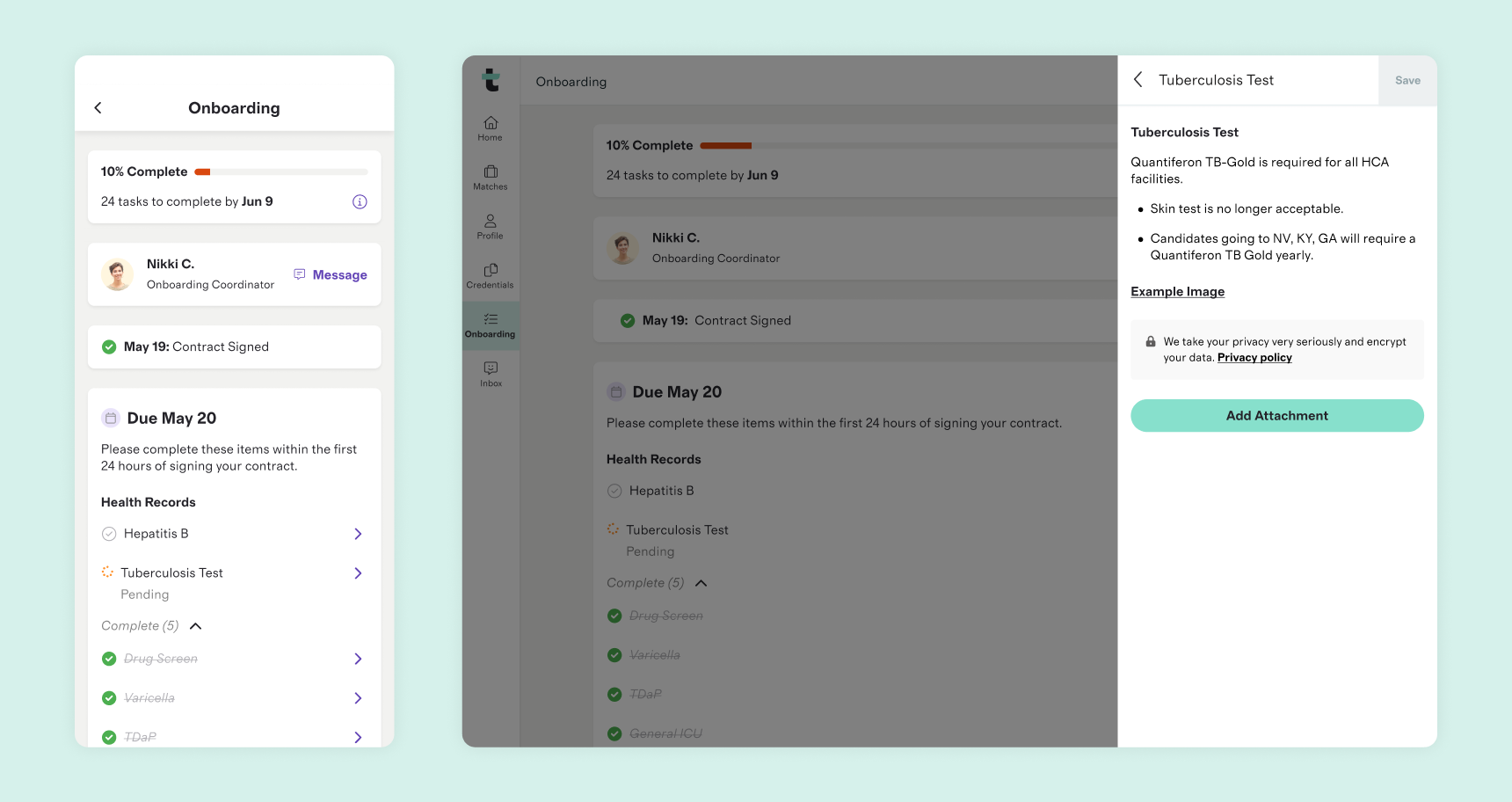
Overview
When a nurse has signed a contract with a hospital, they have to complete their onboarding before they can begin their assignment. This process involves completing 30+ tasks like vaccinations, health records, and signing consent forms. Some of these tasks can be difficult and time-consuming, and if not done correctly and on-time, can result in delayed starts.
Objective
As the product designer on the Onboarding team, I was tasked
with improving the user experience so that we could speed up the onboarding process for nurses.
Problems With The Existing Product
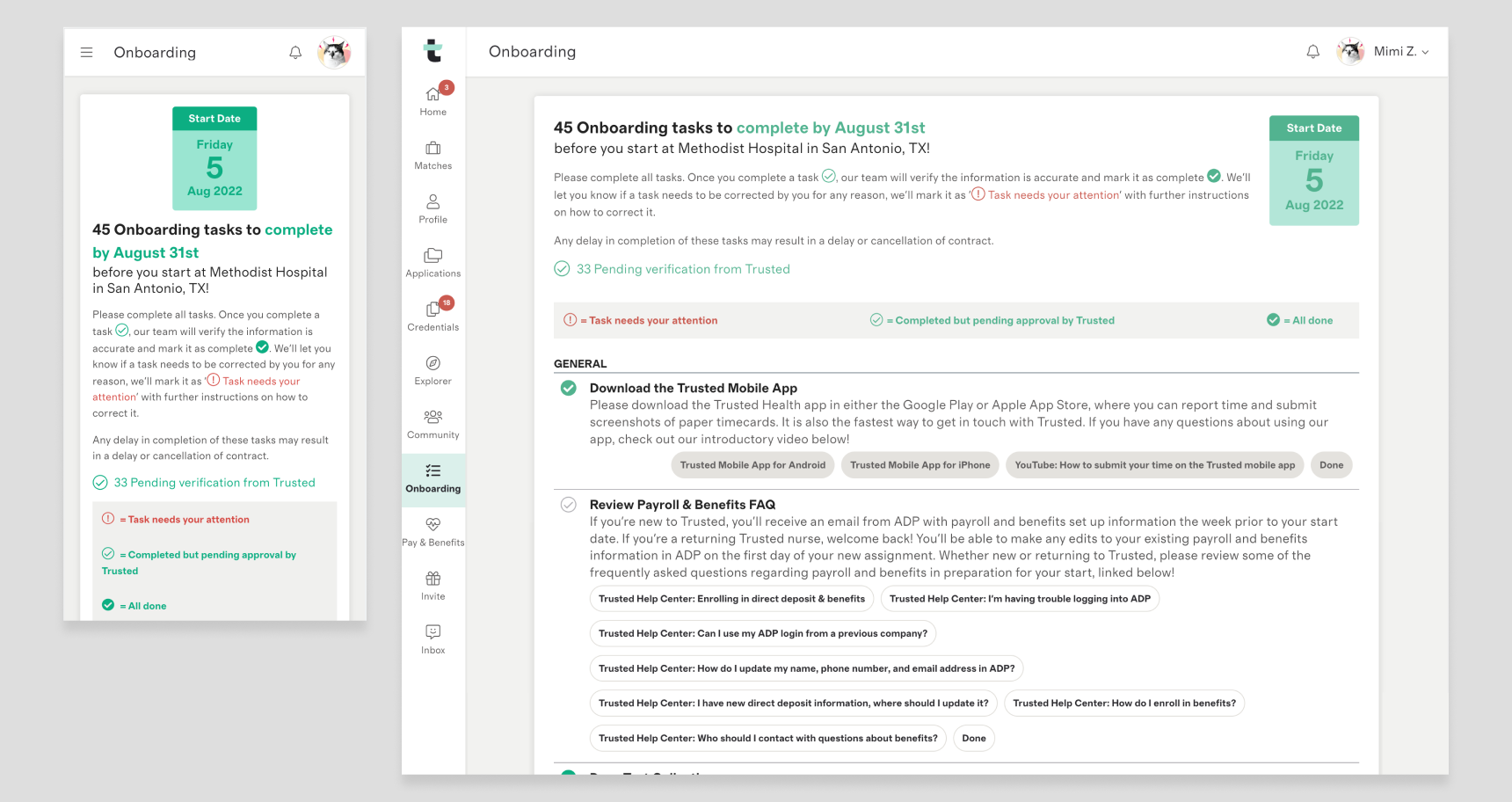
Screenshots from the previous onboarding experience
Through extensive user research, I identified four main pain points with the existing onboarding experience:
- Nurses didn't know which tasks to complete first.
- Nurses often uploaded incorrect, expired, or incomplete documents.
- Nurses had particular difficulty in scheduling health appointments.
- Nurses didn't know how to get help with onboarding.
I worked with the PM and the engineering team to design solutions to address each of these pain points so that we could achieve our goal of faster onboarding.
Prioritized Timeline

The existing onboarding experience was confusing for nurses because it was just one long list of 30+ tasks. There was too much content on screen, and all of it was unorganized.
To improve this, I redesigned the experience to show nurses a list of tasks in priority order, shown with clear deadlines for each. I removed clutter from the page so that each element on screen was intentional and purposeful in helping users get through the onboarding process.
Clarified Instructions

In doing an audit of our existing task instructions, I found that they were often confusing, ambiguous, and overly wordy. I worked with our Onboarding Coordinators to rewrite them so that they were clear, concise, and displayed in a way that was easier to parse.
In addition, I created example images for certain tasks in order to further clarify for users what exactly to provide for those tasks.
Appointment Requests
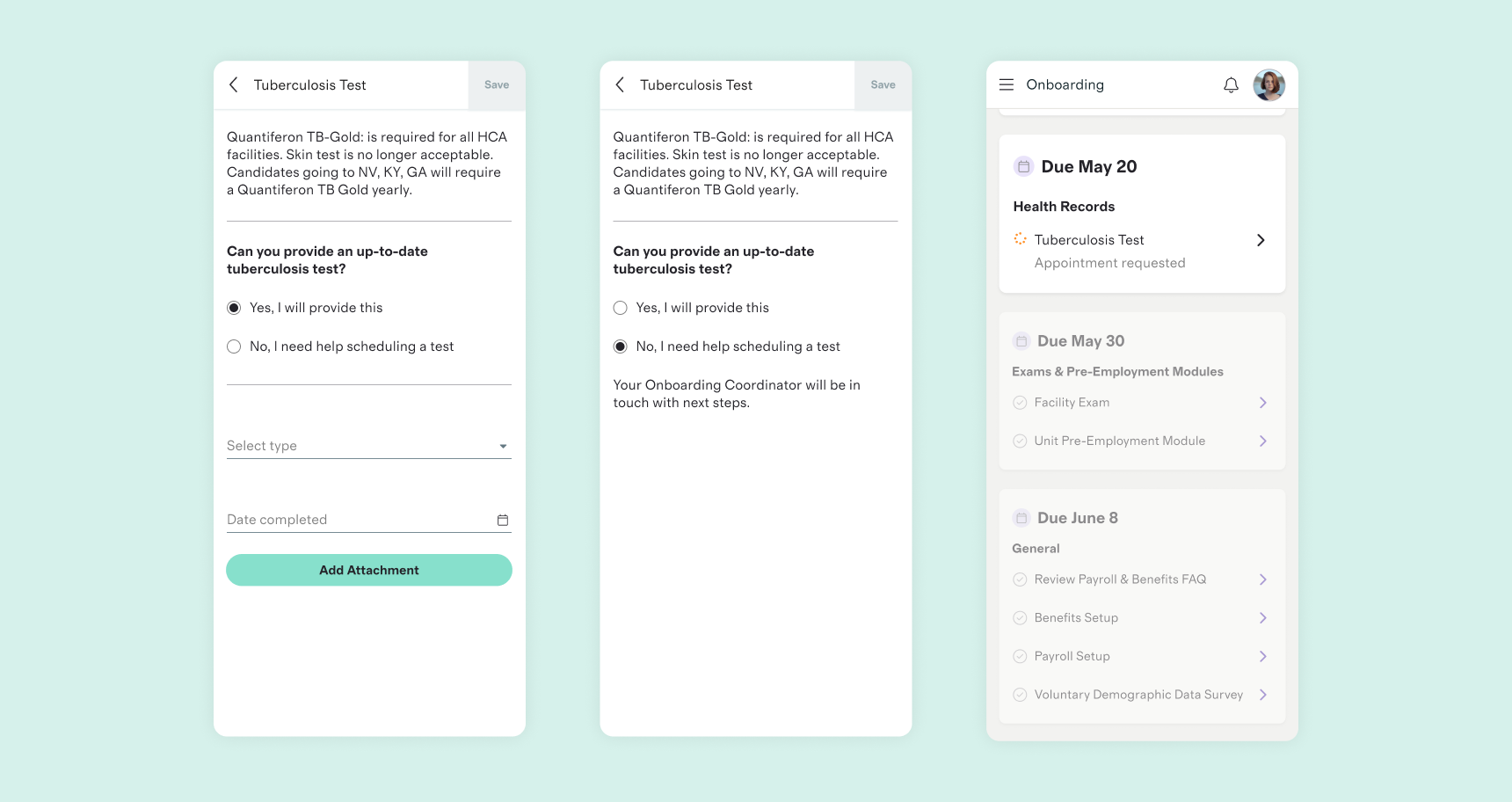
In doing research of the existing product, I discovered that health appointments were one type of task that nurses found especially difficult. The existing UI simply asked nurses to upload a health document, with no next steps if they didn't have that document for whatever reason.
I worked with the Onboarding Coordinator team to improve this experience by first asking the nurse if they were able to upload the requested document. If not, our OC team would help them schedule the appropriate appointment.
Messaging Your Coordinator
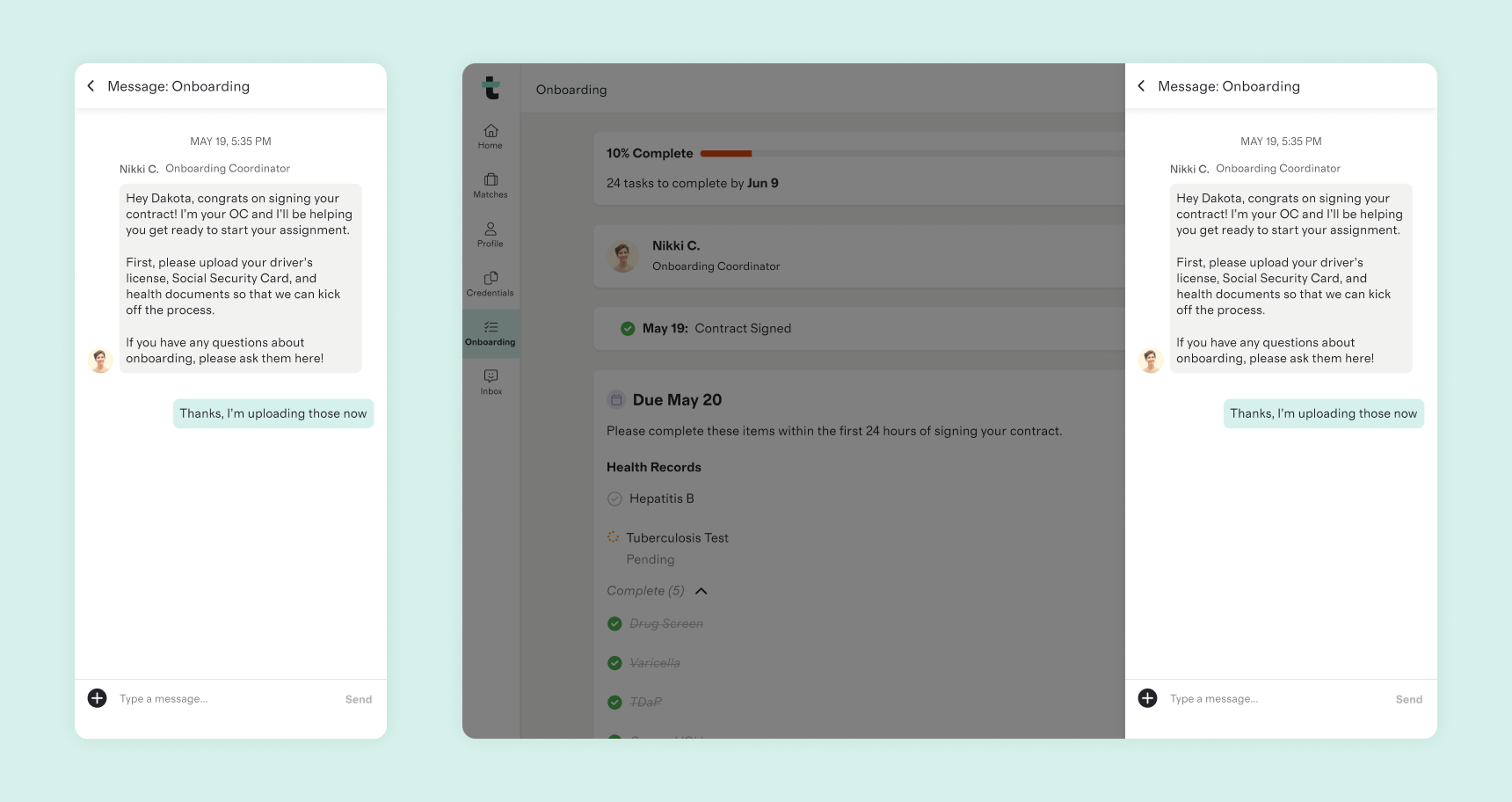
One of the biggest complaints about the existing onboarding experience was that nurses felt like they didn't know who to turn to when they had questions. There were multiple people from Trusted that they were in contact with, spread across difference channels like text, email, and phone.
I proposed streamlining this experience by having the dedicated Onboarding Coordinator for each nurse be shown prominently in the UI so that there was no doubt of who to contact for help. This fit into Trusted's strategy of moving communications with nurses into our in-app messaging tool, which was more cost-effective for the company.
Cross-Platform Design
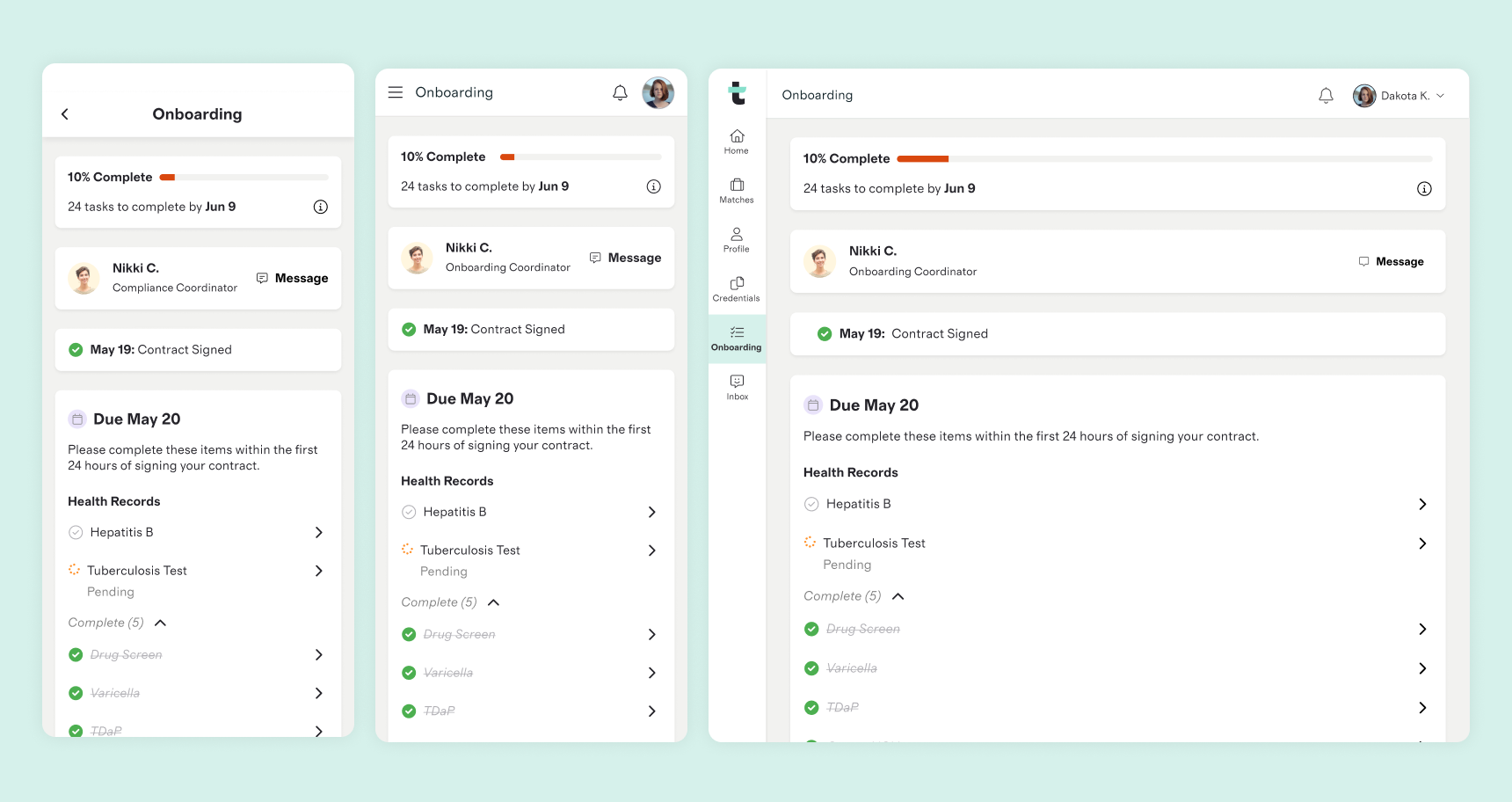
Mobile app, mobile web, and desktop versions of onboarding
To provide a convenient and consistent experience for our users, we used a single design across the native mobile, desktop web, and mobile web. We wanted nurses to be able to use whatever platform was most convenient for them for individual tasks. Not only was this beneficial for the user experience, it also streamlined the design and development process.
Impact
Along with improved visuals and usability, the redesigned onboarding experience resulted in significant improvements to our metrics:
- 30% faster onboarding overall
- 10%+ increase in document upload accuracy
- 10%+ increase in nurse satisfaction
